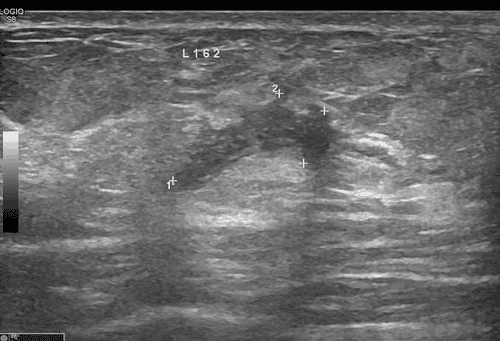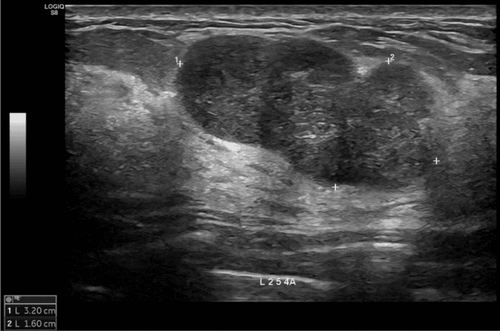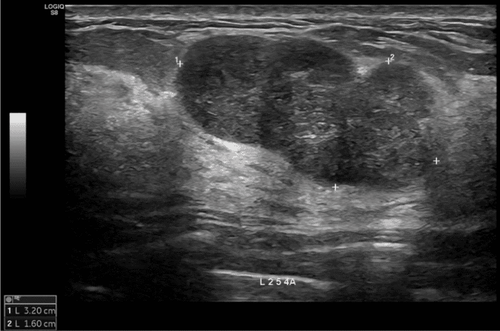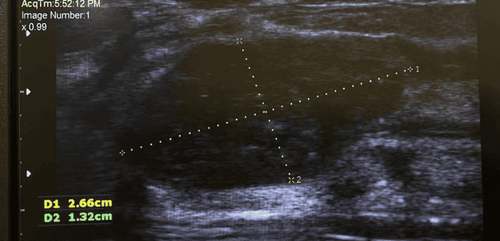A patient A (43 years old), in March 2024, went for a routine health check-up at a private hospital in Hanoi and discovered a lesion in the left breast measuring 12x5 mm, classified as BIRADS 4a. After consultation, the patient underwent tumor excision surgery at the medical facility. The post-surgery tumor was sent for pathological examination to help doctors determine whether the tumor was benign or malignant. The results showed that the patient had ductal carcinoma in situ (DCIS).
Still worried, the patient decided to go to Singapore for additional PET-CT (a diagnostic imaging technique used in cancer diagnosis and treatment) and MRI (magnetic resonance imaging) to further evaluate the lesion (although PET-CT is not necessary for DCIS). However, the results showed that the patient still had residual tumor after the previous surgery and once again, the patient was advised to undergo another surgery to to perform a wide excision of the tumor bed (the area where the tumor is located).
The patient decided to return to the initial hospital for breast-conserving surgery (surgery to remove the tumor but preserve the breast tissue). However, here, the patient was not advised to evaluate the surgical margins to ensure complete removal of the lesion, minimizing the risk of recurrence and metastasis. Additionally, the patient was not fully informed about the indications and effectiveness of adjuvant radiotherapy and was only treated with Nolvadex 20mg/day for the next 4 months.
Noticing this shortcoming, the patient became worried and decided to seek more comprehensive consultation at the Breast Center at Vinmec Times City International Hospital. Here, the patient was prescribed an MRI to evaluate the surgical area as well as the remaining breast tissue. The MRI results showed that the patient had abnormal enhancing lesions in the left breast, near the surgical site, highly suspected to still have DCIS. However, the concerning issue is that this lesion was completely undetectable on ultrasound, so for treatment, the doctors needed to perform under MRI guidance.

The patient decided to return to the initial hospital for breast-conserving surgery (surgery to remove the tumor but preserve the breast tissue). However, here, the patient was not advised to evaluate the surgical margins to ensure complete removal of the lesion, minimizing the risk of recurrence and metastasis.
Additionally, the patient was not fully informed about the indications and effectiveness of adjuvant radiotherapy and was only treated with Nolvadex 20mg/day for the next 4 months. Noticing this shortcoming, the patient became worried and decided to seek more comprehensive consultation at the Breast Center at Vinmec Times City International Hospital.
Here, the patient was prescribed an MRI to evaluate the surgical area as well as the remaining breast tissue. The MRI results showed that the patient had abnormal enhancing lesions in the left breast, near the surgical site, highly suspected to still have ductal carcinoma in situ (DCIS). However, the concerning issue is that this lesion was completely undetectable on ultrasound, so for treatment, the doctors needed to perform under MRI guidance.
In this situation, there are usually two options:
- The patient can go abroad to perform a biopsy under MRI guidance, but this option is relatively expensive and requires a lot of travel effort.
- Closely monitor the lesion with MRI every 6 months, but the patient will have to live in anxiety because of a suspicious lesion in the body.
However, the team of doctors at the Breast Center chose a different approach. Dr. Nguyen Thu Huong, Head of the Breast Unit at Vinmec Times City International Hospital, spent many hours discussing and finding ways to correlate the lesion images on MRI and ultrasound, as well as determining the relationship of the lesion with anatomical features such as the nipple, chest muscle, and surgical scar.
The next morning, a team of 5 doctors, including imaging specialists, medical oncologists, and interventional doctors, arrived early to perform a non-contrast MRI scan of the lesion, mark the position, and re-identify the lesion on ultrasound. After accurately determining the position, the doctors performed a vacuum-assisted biopsy under ultrasound guidance for nearly 3 hours.
The final pathology results confirmed the initial suspicions: the patient still had ductal carcinoma in situ (DCIS) remaining after the previous two surgeries. Given this situation, the patient will certainly need to prepare for a third surgery within a few short months.
Breast cancer diagnosis requires a combination of many factors, from equipment and machinery to the expertise of doctors. If the patient had visited a specialized breast disease medical facility from the beginning, the diagnosis and treatment process could have been optimized, thereby reducing the difficulties and risks that this patient faced.
When visiting the Breast Center at Vinmec Times City International Hospital, patients will receive:
- Accurate diagnosis with less invasive methods: Initially, patients will have their lesions evaluated histopathologically using core needle biopsy or vacuum-assisted biopsy – less invasive methods. This helps patients avoid unnecessary initial surgeries.
- Optimal treatment planning from the start: Instead of undergoing multiple surgeries and traveling abroad for checks, patients will receive detailed consultation and explanation about their condition and treatment methods. Additionally, through consultations among leading experts, patients can be advised on the optimal surgical method from the beginning, such as wide excision of the tumor bed with margin assessment to ensure complete removal of the tumor.
- Reduced stress and treatment costs: If patients receive complete and accurate treatment from the start, they will avoid unnecessary anxiety, complicated trips abroad, and high costs for inappropriate indications (such as PET-CT scans) or additional surgeries or biopsies.
Through this story, we can see the importance of choosing the right specialized medical facility from the beginning to ensure accurate and timely cancer diagnosis and treatment plans.
At Vinmec Times City International Hospital, the close coordination between specialties and the use of advanced technologies are always prioritized, helping patients accurately determine their condition and provide effective treatment methods, avoiding unwanted complications.
This is clear evidence showing that the dedication and expertise of the medical team play a key role in the patient's recovery process, giving them a higher chance of overcoming the disease.









